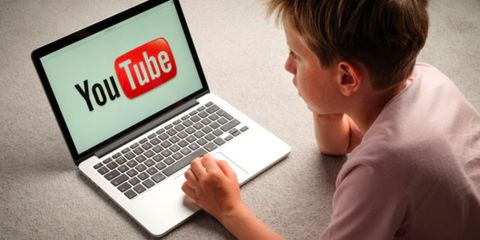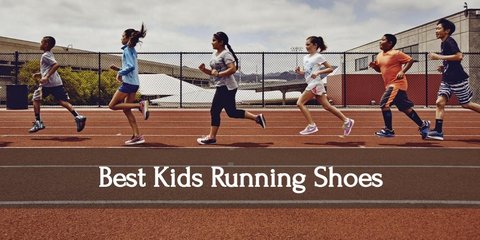6 Effective Learning Strategies for Students in 2022
Education is a universal human right. But in New Jersey, wherein the education system needs some immediate and significant changes, many students find it hard to formulate their learning strategies, thus, failing to exercise their right to education eventually.
One major obstacle of New Jersey students is the Partnership for Assessment of Readiness for College and Careers or PARCC assessment. The time and effort that the students have to invest, the pressure of taking and passing it, as well as the mandatory requirement for graduation are just some of the burden the PARCC assessment is putting on the youth.
Though the current governor is pushing to totally remove the assessment, it is still part of the current curriculum.
But with the right mindset and determination, any student in New Jersey, taking the PARCC test or not, can come up with their powerful learning strategies. Here are some of the ways and guidelines that students can apply to make their studies worthwhile.
1. Use the spaced practice or distributed practice of learning.
It is a common practice of students to study for an exam the night before the actual test. Cramming, this is the usual term used by many. Though it can be effective at times, there is a better way of learning and remembering your lessons than trying to memorize and absorb everything in just one night.
Spacing out your study time to shorter sessions can prevent the sudden failure to recall a lesson that was studied three weeks ago for an exam. Leaving a little space between your study periods makes you forget a bit of information. You would then try to relearn it on your next reading time. A tad of forgetting can actually help you improve and strengthen your memory.
Working college students in New Jersey can still apply this method of learning. They just have to create a studying calendar to plan out the sections of their lessons to be distributed to their available learning periods.
2. Master the retrieval practice of learning.
This learning activity is when you try to recall an information that you have learned before without the need to look at it again.
The usual learning method that is being used by students is to re-read their notes, textbooks, and other materials. This is not a bad strategy but if the information is already in front of you, your mind will not be forced to recall it from your memory.
For a more effective learning, you should practice recalling information without supporting materials.
Some will say that it is hard to adapt this learning strategy, it’s like taking a pop quiz, and preparing the materials on your own will only eat your time out. Retrieval practice does not need to be as formal as an exam. Before reading your notes again, you can just jot down or say out loud the things that you remember from your teacher’s discussion. Write everything that you can recall and later check your work’s accuracy from the notes that you made. You can also practice with a partner, explaining the lesson to each other as you review for your test.
In preparing for an exam like the PARCC assessment, this would be a really helpful technique as it would develop your brain in recalling information faster.
3. Elaborate and describe your ideas further.
One step higher than retrieval practice is elaboration. It requires the students to not just recall information but make connections among ideas that they are trying to learn. Connecting your lessons to your own experiences and observations can also be an effective elaboration.
This can be achieved by asking open-ended questions regarding the subject being studied. Giving more details and examples as well as using your own words in explaining the concepts can really help you strengthen your knowledge about the subject. After elaborating, check your materials in order to confirm if you have understood it correctly.
This method can also be practiced during class discussions wherein ideas of the students are asked and shared in the classroom.
4. Switch between lessons while you study.
As you study your lesson, you sometimes spend too much time on one section since you might believe that to learn a skill, you need to practice it over and over again. Repetition is essential but research showed that learning a skill can be more effective when you mix other skills in your practice. That technique is known as interleaving.
The PARCC assessment includes Math subjects and interleaving can help you in problem-solving lessons. It can aid you in choosing the appropriate strategy to solve a problem and also help you see and understand the connections, similarities, and variances among ideas.
When do you know when to switch? It is vital that you know the switch timing, it is when you have already covered and understood the lesson.
As you jump to another topic, don’t tend to forget the previous lesson. The syllabus of a subject is designed based on the connections of all the topics that need to be covered. You can then try to find the link between the previous lesson and the next concept that you are studying. Some solutions to the problem-solving questions of the current topic can also involve concepts from the last lesson learned.
Don’t also forget to use retrieval practice and elaboration when practicing interleaving to make your strategy more effective.
5. Use detailed examples when understanding abstract ideas.
When faced with an unfamiliar and new topic, students are having a more difficult time understanding the lesson. This can be solved by finding concrete examples to support the concept and make the lesson stick to students better.
This can be done by taking notes of the examples that your teacher has mentioned in class. You can also try finding other examples in your textbooks. Lastly, you can discuss with your classmates for you to exchange ideas and examples.
You just need to be careful as you will not always come up with correct and good examples. In order to check the accuracy of your examples, verify such with your professor.
6. Connect words and visuals.
You will often see visuals in your textbooks or in the materials presented in class by your teachers. It could be an image, a diagram, a cartoon, or a chart. You probably just browse on the narratives and don’t pay attention to the images.
But this should not be the case. It is better if you make it a habit to look and study the visuals and try to connect them to the text. By explaining what you see and understand from the visuals, you are reinforcing the concepts in your mind which will help you recall and explain the topic easier in the future.
This technique is called dual coding, wherein the verbal materials are combined with the visual materials.
This strategy is not only for those students who know how to draw. As long as you can depict the visual in your head, you can always connect the concepts to the image.
You can just also ask yourself how do the words describe the image or how does the image represent the text. These strategies will be more powerful learning tools when combined.
In a community wherein education is not easy due to the problem with funding, pressures of a test that does not provide concrete positive effects to the students, and lack of financial aid for special education, learning strategies are important to at least make the students’ learning easier, stronger, and worth it.
About Author
Sarah Grace Del Rosario is a freelance blogger and event stylist. She currently partners with Smile Tutor, a site offering private tutorial services in Singapore.
Image Credit: Wikimedia
Written By Guest Author

This is a Guest Post. To submit your post, just contact us.


